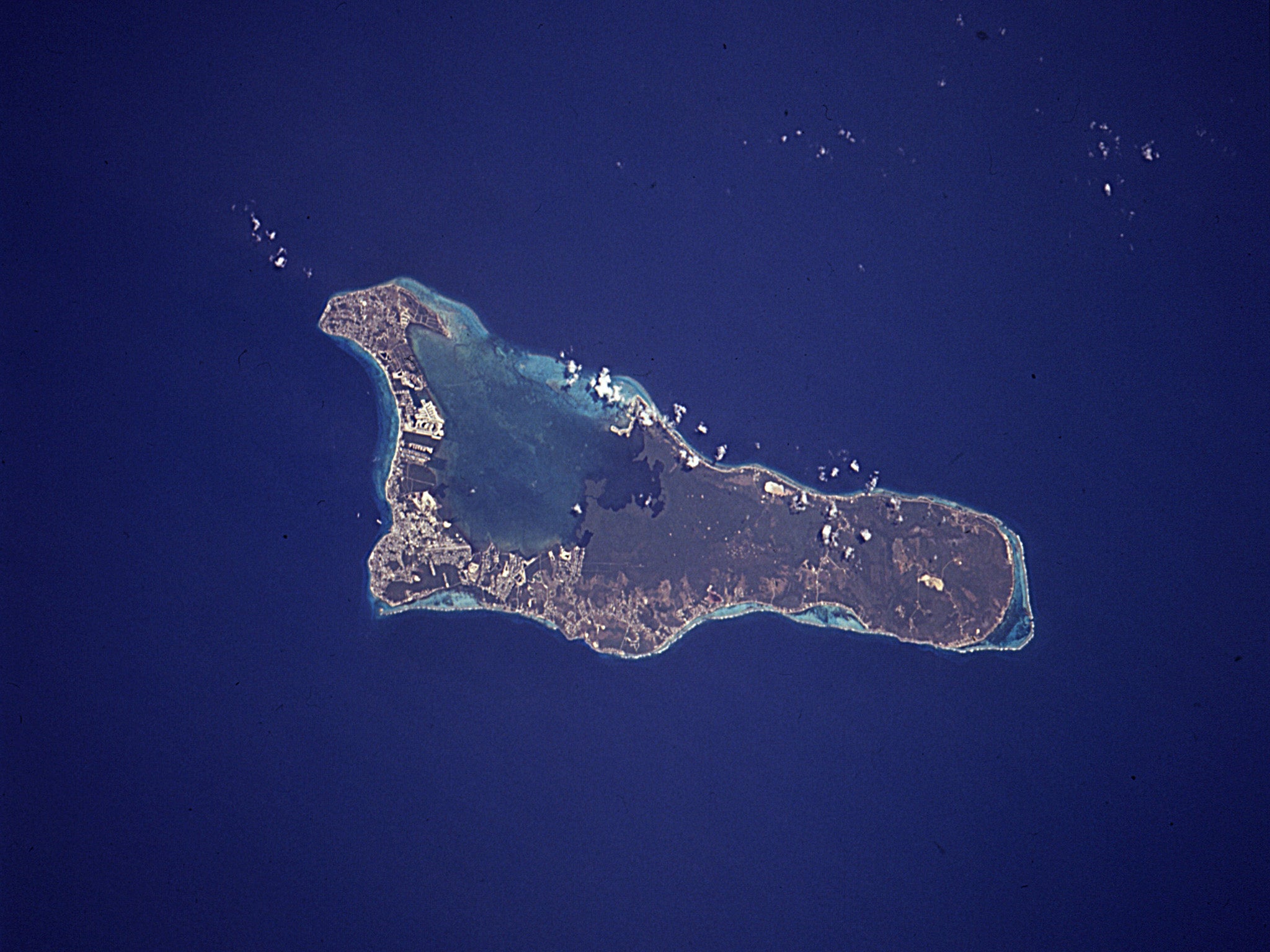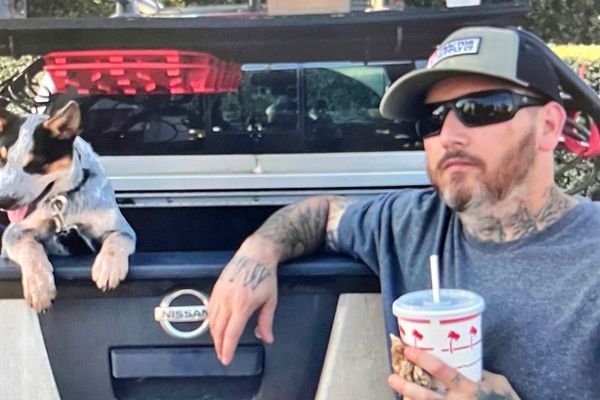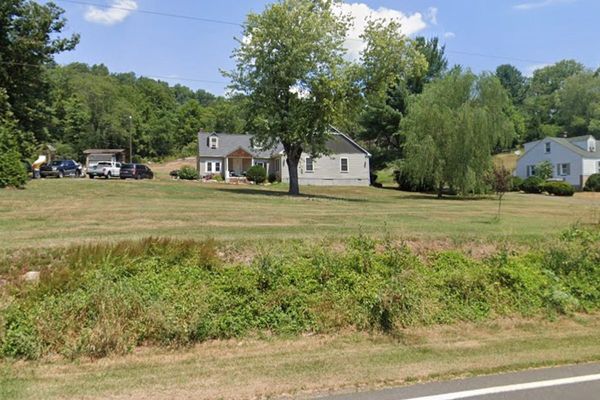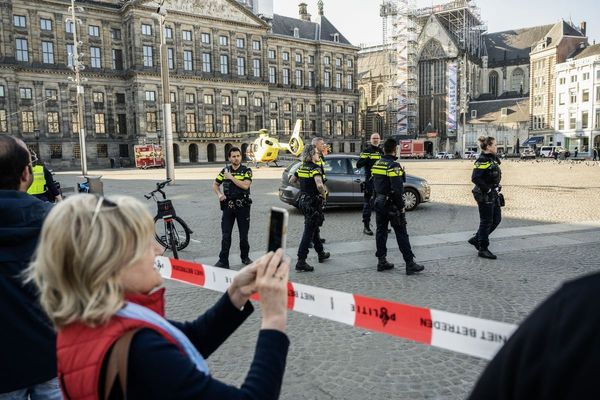
One humid Tuesday in July, I summited the highest point on Grand Cayman, an eight-storey dump known affectionately by the locals as Mount Trashmore. From the top of the foul mound – a collection of almost every piece of rubbish discarded on the island since it went all-in on financial services in the 1960s – I imagined I could just make out the enshrouded beach estate of the secretive investor Kenneth Dart.
I had been on Grand Cayman for more than a week, but I was no closer to speaking with him than when I arrived. The heir to a famously private foam-container dynasty and a reclusive businessman in his own right, Mr Dart apparently hasn’t spoken to the press since 1993. Although he has lived on Grand Cayman for 25 years and is widely believed to be the biggest private landholder on the archipelago, only a few people I interviewed were sure they had seen him. Residents compared him to Batman, Howard Hughes, a Bond villain and both Warren and Jimmy Buffett.
Mr Dart lives on Seven Mile Beach, in an old hotel – the entire hotel – once known as the West Indian Club. He acquired the property in 1994 after renouncing his US citizenship, a tax dodge so audacious it inspired federal legislation. Although Cayman was initially a refuge for the financier, Mr Dart, who is thought to be 64, has taken to his adopted home with zeal. With his fortune and his company, Dart Enterprises, he has increasingly come to define the islands’ future.
In 2007, he opened a major development, a sprawling mix of retail and entertainment venues called Camana Bay, and began amassing a portfolio of high-end properties. His list now includes the Ritz-Carlton, the Yacht Club and a new Kimpton resort. In February, his group proposed a $1.5bn (£1.2bn) “iconic skyscraper” that would rival the Eiffel Tower and the Burj Khalifa of Dubai.
As a place to conduct business, Cayman’s appeal is obvious. The country, a British Overseas Territory, levies no income or corporate taxes, and, since the 1960s, it has become one of the world’s most sophisticated banking centres. While Cayman was once a shady place to stash illicit cash – a reputation cemented by the 1991 John Grisham novel The Firm and a subsequent Tom Cruise thriller – it has long since moved aggressively upmarket, courting institutional investors, private equity and trading firms seeking to minimise taxes and bureaucracy. As of 2016, according to one analysis, it domiciled 60 per cent of global hedge fund assets.
But for his base of operations, Mr Dart has chosen an existentially vulnerable piece of land. At 76 square miles, Grand Cayman is roughly the size of Brooklyn and is, on average, only 7 feet above sea level. In 2004, Ivan, a Category 5 hurricane, submerged most of the island. The damage was valued at close to $3bn (£2.3bn). Bodies buried in beach cemeteries floated out to sea. Animals escaped their enclosures, and, to this day, rewilded chickens roam the islands.
“Problem is, even if hurricanes don’t get any more prevalent, they’ll get stronger,” said James Whittaker, a Caymanian who is a former banker and regulator turned clean energy entrepreneur. “If sea-level rise is a foot, well, that means that a Category 1 now is going to do the same damage that a Category 4 used to do.” Even if Cayman built enough infrastructure to survive the rising water, he added, “The problem is insurance. You’ll never be able to insure the country anymore.”
As I stood atop Mount Trashmore, looking out at the crystalline water, I wondered what Mr Dart thought about the country’s vulnerability to rising seas. Or if, like me, he had quickly fallen into a tropical reverie – a feeling that nothing could possibly go wrong on this exclusive stretch of paradise. Would a wildly successful investor like him buy up so much of a country that was really doomed to disappear?
‘A Caymanian dream’
Until the 1960s, when the first banking laws were put in place to attract international capital, the Cayman Islands was a backwater, with an economy dependent on seamen who would send their remittances back home. When a Cambridge-trained lawyer named William Walker arrived in 1963, he described the place as having “cows wandering through Georgetown, only one bank, only one paved road, and no telephones.” The population was just over 8,000, and the mangrove-covered island was swarming with mosquitoes.
The banks moved in first, then the accounting and law firms. Seven Mile Beach, previously undeveloped, became an international tourist attraction for both divers and money managers. By the end of the 1990s, the jurisdiction had established itself firmly as a leading global banking centre, and today financial services accounts for over half of its economy.
Proponents of the Cayman business model argue that its benefits accrue to all of the islands’ citizens, who can boast of having one of the highest gross domestic products per capita in the world. Foreign capital, much of it in the form of duties and fees, helps fund schools and infrastructure. Regulations direct employers to give special consideration to Caymanians for jobs and require that Caymanians own shares in local businesses. But many islanders complain of a two-tiered system. Caymanians get jobs but are then passed over for promotions. The best-paid positions often go to highly educated expatriates, who make up just under half the resident population of about 66,000.
“They say this is a trickle-down economy,” said Roy Bodden, a historian of the Cayman Islands and former member of the Legislative Assembly. “So, here’s my argument. Why should it be a trickle for us? Why aren’t we holding the cup?” Mr Bodden has been a vocal critic of the islands’ unchecked development and what he sees as the disenfranchisement of the island population. “You talk about the American dream, well, we had a Caymanian dream,” he said. The way he told the story, the elites had sold the country out.
When Mr Dart relocated to Grand Cayman, his secretiveness and colourful business dealings aroused local suspicion. In 1993, his home in Sarasota, Florida, burned to the ground in an arson that was never fully explained. After Mr Dart renounced his ties to the United States a few months later, he moved first to Belize, whose government in 1995 proposed to the State Department a Belizean consulate in Sarasota, where Mr Dart and his family could live, presumably tax-free. The idea was never seriously considered, and Mr Dart settled on Grand Cayman.

It is a closely guarded secret how much of the three-island territory – Little Cayman and Cayman Brac hover just to the northeast of the big island – Mr Dart and his subsidiaries own. Many islanders take it for granted that he is the biggest private landholder on the islands, and some suspect he owns more land than the government. (A spokeswoman for Dart Enterprises said the company would not comment on its investment decisions.)
After the 2008 financial crisis, the Cayman economy contracted. But Mr Dart picked up the slack. In addition to resorts, office buildings and residential properties, his company began planning and building major municipal infrastructure projects like tunnels and roads, reinvigorating long-held concerns on Grand Cayman that Mr Dart and his subsidiaries controlled too much of the island. A 2015 audit of the government’s land management scolded ministers for allowing Dart subsidiaries such free rein.
An audacious plan for Mount Trashmore
Some speculate Mr Dart is private because he fears for his safety. As the scion of a Michigan family business, Dart Container, that has long dominated the polystyrene foam market (it also makes plastic Solo cups and other iconic food service products), Mr Dart was born into a significant fortune. But he also had a talent for trading, making lucrative investments over the decades in financial firms, biotech companies, Russian public vouchers and steeply discounted sovereign debt in Greece and Argentina, among many other companies and countries. Some investments made him enemies. His yacht was armoured to withstand torpedo fire, one of his two brothers, Tom, told Bloomberg News in 1995. When he first moved to the islands, he could be seen flanked by bodyguards.
In 2014, Mr Dart stepped down as president of his family’s container business and has, according to comments made in 2015 by the Dart Enterprises chief executive, Mark VanDevelde, become more focused on real estate development and conservation. He also oversees an extensive nursery on the island, where he collects native and endemic trees and plants.
According to materials shared or published by Dart Enterprises, the company has invested more than $1.5bn (£1.2bn) in the Cayman Islands, with another $1bn (£770m) in the development pipeline. This does not include the estimated price tag for the skyscraper. Bloomberg puts Dart’s net worth at $5.8bn (£4.5bn). “They’ll tell you they have ‘patient capital,’” Mr Whittaker said. “That’s the word they like to use. Which means ‘I’m going to throw two, three billion dollars in the ground and my kids or my grandkids will reap the rewards once it gets built.’”
Mr Dart’s vision for Cayman is comprehensive. In a 2018 video presented at the local Chamber of Commerce, his company outlined a building programme that would connect the white sands of Seven Mile Beach to a protected bay known as the North Sound, incorporating extensive landscaped pedestrian parks and revamped roadways – in effect, designing a whole town. It would include major new residential developments and offices, in addition to yet another five-star resort on a stretch of beach that abuts the billionaire’s residence.
The plans reminded me of a game of Monopoly – if a player purchased all of the fanciest properties and packed them with houses and hotels for money managers. When I went to the island, I made an effort to book one of the few Seven Mile Beach hotels that Mr Dart doesn’t own; halfway through my stay, I read an announcement in the local paper that he had bought it
Improbably enough, Kenneth Dart’s most audacious investment involves Mount Trashmore. Haphazardly established in the 1960s, the massive garbage pile was never trenched or lined, and no one knows what might be leaking from the dump into the ground. Parts of the mountain sometimes spontaneously combust, requiring evacuation of local businesses and a nearby Dart-developed private school. Since Mr Dart started building on Grand Cayman, the dump has been an obstacle, impeding new development. His company has proposed to cap Mount Trashmore and build a new waste-to-energy facility to dispose of future garbage, which it would manage for the next 25 years, at an estimated cost of nearly half a billion dollars.

The arrangement – the heir to a disposable-cup fortune offering to clean up an entire country’s garbage – seemed remarkable to me, but the Caymanians I spoke with didn’t bat an eye. Except when the stink wafted down the mountain; then they batted their eyes a lot, because they were watering.
Risks of a meltdown
For three weeks before arriving on the island, I corresponded with a Dart company spokeswoman, who made it cordially clear that an interview with Mr Dart was a non-starter. At one point, she offered to consider written questions and present them to Dart executives. I asked what Mr Dart saw from a real estate perspective in Cayman. “Not everyone who moves to a place they love invests in it so heavily,” I wrote. I also asked about the dump and the risks of global warming. As far as I knew, Mr Dart was neither a climate sceptic nor a denier, and yet he continued to acquire significant parcels of a country that was, topographically speaking, one of the most vulnerable on Earth.
Nick Robson, the founder of the Cayman Institute, a nonprofit organisation that has advocated better long-term planning on the island, says Cayman is nowhere near prepared for rising seas and extreme weather. We met on the terrace at a Westin resort, which, like many developments on Seven Mile Beach, is on an elevated concrete slab. The UN Intergovernmental Panel on Climate Change, he said, predicted that sea levels would rise by roughly 1 metre by the end of the century.
Robson said he also worried that Cayman’s economic reliance on financial services wasn’t sustainable. “It’s almost a post-colonial dispensation,” he said, describing the sometimes uneasy relationship that has always existed between Cayman, Britain and the international community.
After the 2008 financial crisis, the political will to reform systems that facilitate tax avoidance reached a high. In 2010, the United States passed the Foreign Account Tax Compliance Act, which requires foreign financial institutions to identify American citizens who are account holders and report that to the Treasury. Since 2013, the Organisation for Economic Cooperation and Development has been creating an international framework that aims to reduce corporate tax avoidance, particularly for large multinational and internet-based firms.
Meanwhile, Britain has promised to adopt a set of stringent EU policies designed to combat money laundering and terrorism. If fully implemented, protectorates like Cayman would be expected to create public registers of company owners and provide access to the names of the beneficiaries of trusts. The registers could be accessible not only to law enforcement but also to those with “legitimate interest,” including investigative journalists and nongovernmental organisations. “What’s in the wind now is potentially existential for the financial services industry in Cayman,” said Alex Cobham, chief executive of the Tax Justice Network, a watchdog group. “I think it does start to look like it could be a perfect storm for Cayman.”
If the colonial period was Cayman’s opening act, and financial services its middle, it seemed to me that Mr Dart was quietly preparing for Cayman’s possible finale: as an upscale tax domicile and tourist attraction for the global ultra-wealthy who could afford to come and go from an existentially imperilled island.
Justin Howe, a Dart group executive vice president, talked up the proposed skyscraper’s benefits at a recent economic forum. “We’re looking to bring in more high net worth, ultra-high net worth, potentially even more billionaires,” he said during a question-and-answer session. “They take virtually nothing out of the economy and they put massive amounts into the economy, so we think that’s what a five-, five-plus-star resort has the potential to do.”
The plan is to build the tower set back from Seven Mile Beach, in the middle of the Camana Bay development. Whatever might happen with international tax legislation or volatile financial markets, the building would be a hedge of sorts, positioned to bring in capital and withstand the rising ocean.
“Is everything he does great? I won’t say everything he does is great,” Mr Whittaker said of Mr Dart, after showing me a map of Hurricane Ivan’s devastation. “I think in overall net benefit, yes, he’s been a net benefit to the island. We need to get one or two more like him, and we’ll be insulated from world shocks.”
The New York Times







